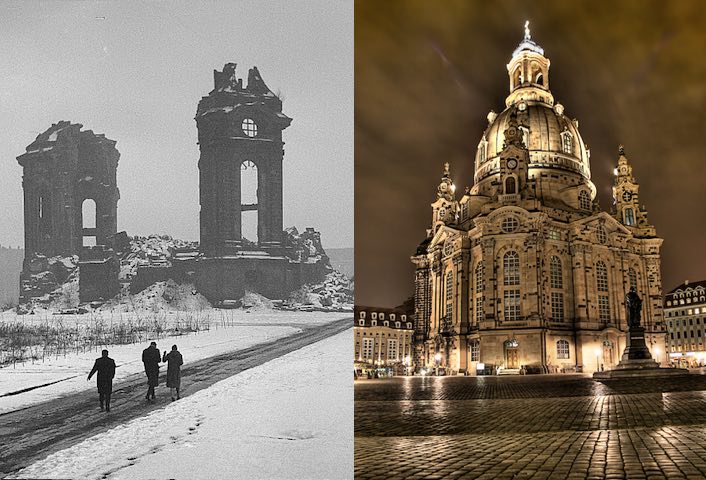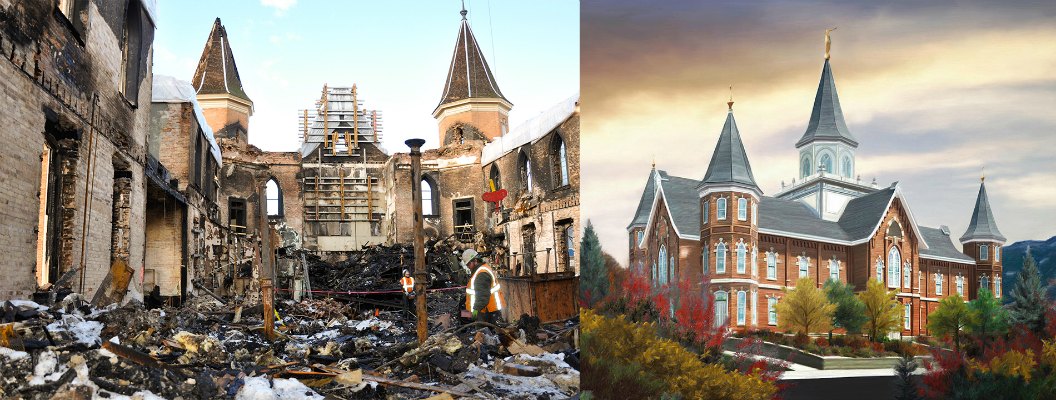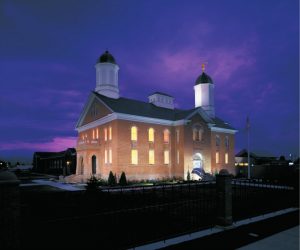Sometimes, Like Notre Dame, God Lets Us Burn; Here’s Why
With the recent burning of the Notre Dame Cathedral in Paris, I am reminded of the principles of sanctification and restoration.
It was interesting to see a mixed response concerning this majestic, ancient structure. Some mourned the destruction, as it stood as a piece of history, art, and culture in the community for over 8 centuries and was the subject of art and literature. Some mourned the event for its impact on future Catholic worship services.
Some took the opportunity to take photographs in front of the burning structure as they grinned in celebration of the disaster; and many are taking to social media to berate those that mourn the loss of this building as they see it as a symbol of dark ages filled with brutality, death, molestation, and other evils carried out either within its walls or by those this building represents. While those atrocities are committed by people, the structure becomes the subject of harsh criticism.
I’m humbled by President Nelson’s note to Pope Francis regarding being “heartbroken by tragedy to such an ageless symbol of faith” and his prayer that “Notre Dame will rise again in newness of life.” What a beautiful sentiment to consider in the wake of such a loss.
Sanctification

To touch on the fire itself, I think about the principle of sanctification, “the process of becoming free from sin, pure, clean and holy through the Atonement of Christ.” It is the baptism by fire and by the Holy Ghost. It is to “rise again in newness of life” through Jesus Christ.
For us, Doctrine and Covenants 88:68 teaches, “Sanctify yourselves that your minds become single to God, and the days will come that you shall see him; for he will unveil his face unto you, and it shall be in his own time, and in his own way, and according to his own will.”
While this building doesn’t need the atonement to be rebuilt, it can stand as an amazing symbol to us as it is reconstructed, and we witness miracles pour in from communities around the world. We will see God’s will in action.
I’m reminded of when President Uchtdorf shared the story of Dresden, a city that he lived near, which was completely devastated during world war. This city, once called the “Jewel Box,” was wiped out.
In a monstrous and brutal manner, the city was cleansed by fire.
In recent years, according to his talk, he had to chance to visit Dresden and “saw the beautiful Lutheran Church Frauenkirche, the Church of Our Lady.” It was built in the 1700s, but was a complete loss in that war, and remained a pile of rubble until it was decided to rebuild it.
Restoration

During the reconstruction of Frauenkirche, original stones, which were cataloged and stored, were then reused in the new building with these fire-blackened stones standing in stark contrast to the white and yellow stones used in the reconstruction.
“These ‘scars’ are not only a reminder of the war history of this building but also a monument to hope—a magnificent symbol of man’s ability to create new life from ashes.”
And isn’t that the hope? I know that it was my hope when I began to return to the Church and seek to remake those covenants I made at baptism.
President Uchtdorf, in pondering the beauty and meaning of this newly restored structure thought, “if man can take the ruins, rubble, and remains of a broken city and rebuild an awe-inspiring structure that rises toward the heavens, how much more capable is our Almighty Father to restore His children who have fallen, struggled, or become lost?”
Because of Christ, and his eternal gospel, “it matters not how completely ruined our lives may seem. It matters not how scarlet our sins, how deep our bitterness, how lonely, abandoned, or broken our hearts may be. Even those who are without hope, who live in despair, who have betrayed trust, surrendered their integrity, or turned away from God can be rebuilt. Save those rare sons of perdition, there is no life so shattered that it cannot be restored.”
I know this principle all too well, as I had to go through a sanctification and restoration process. So, when I see holy structures, no matter how flawed their history may be, burn to ash, and then later rebuilt and improved upon, I think of the beautiful nature of the Atonement in my own life.
The Notre Dame Cathedral, the Nauvoo Temple, and the spire of the St. George Temple, and the Provo City Tabernacle, which was not just rebuilt, but made more sacred by converting it into a holy temple, all stand as symbols of sanctification and restoration.
I hope that they rebuild the Notre Dame Cathedral and I hope that it means something more to the people of France and the rest of the world that healing can take place. I hope that people can see it as a way to cleanse the past and prepare for a new and better experience for the community and individuals.
Holy Places

Those who have not needed to repent of serious transgression or apostasy also have beautiful symbols of how the Atonement of Christ is still engaged in their lives. It doesn’t take tragedy or disaster for the Atonement to cleanse us and improve us if we let it.
C.S Lewis said, “Imagine yourself as a living house. God comes in to rebuild that house. At first, perhaps, you can understand what He is doing. He is getting the drains right and stopping the leaks in the roof and so on; you knew that those jobs needed doing and so you are not surprised. But presently He starts knocking the house about in a way that hurts abominably and does not seem to make any sense. What on earth is He up to? The explanation is that He is building quite a different house from the one you thought of — throwing out a new wing here, putting on an extra floor there, running up towers, making courtyards. You thought you were being made into a decent little cottage: but He is building a palace. He intends to come and live in it Himself.”
This quote reminds me of the Vernal Utah Temple, which was once an old tabernacle in the heart of that small community. Nothing that I know of was damaged, but the building was older, and President Gordon B. Hinckley announced the conversion of the tabernacle into a beautiful temple. The building was not only restored and improved upon, but the community was blessed by having a temple to worship in.

It was announced this past General Conference that in coming months and years, a few of our oldest pioneer era temples, including the St. George, Manti, Logan, and Salt Lake City temples will be closed for renovations.
Nothing tragic or devastating happened to these historic, beautiful and holy structures, but the Lord has seen fit to counsel the prophet and apostles to make necessary structural changes, to improve the accessibility and beauty of these holy houses and to prepare them to endure possible seismic activity. What a grand symbol for those who are on the path of their duty and still growing each day, to know the Lord also has this engagement in our lives to make us more accessible to the Spirit, to beautify our lives as we live the gospel, and to prepare us for conditions in this life that tend to rock us and shake us whether because of the adversary or through adversity.
Now that I am in a place of restoration, a place of newness of spiritual life, and a place of peace and comfort, I get to enjoy the atonement in a whole new way and to see what the Lord intends to do with my life. The lessons we can learn from the building and rebuilding of these sacred structures can go in so many directions.
My life, like the Notre Dame Cathedral, saw years of faith interspersed with depravity. It took some heavy consequences for me to turn to the Lord and to ask for him to cleanse and sanctify me. This building, if others will let it, can be a majestic symbol of the atonement of Christ the way I experienced it.
Others may have had, through no fault of their own, experienced the harsh consequence and evils by the actions of others like Frauenkirche, the Church of Our Lady, in Dresden. It was shattered because of the decisions of others and what once stood as a beautiful jewel of the city, stood once again, beautiful and symbolic of how the past doesn’t define our lives, but can be used to build us up in a more sacred manner.
Then there are those who Jacob described as “pure in heart, and the broken heart,” and who Samuel the Lamanite would say were “in the path of their duty, [who do] walk circumspectly before God, and do observe to keep his commandments and his statutes and his judgements;” these are they whose lives are like those of the pioneer ere temples that will be renovated and prepared for further, spiritual stability and beauty in the gospel.
Maybe your life doesn’t resemble any of these structures and you feel like you weren’t built for sacred purposes. Elder Holland described Liberty Jail, which confined the prophet Joseph Smith and others for six bitter months and was “one of the more forbidding structures in Missouri, was considered escape proof, surrounded by stone walls four feet thick” and with the height of that dungeon barely reaching 6 feet high. He, referencing earlier uses of the term by Neal A. Maxwell and others, called Liberty Jail a “prison-temple, which lacked the purity, beauty, comfort, and cleanliness of our modern temples. The speech of the guards and criminals who came there were anything but temple-like.”
He then asks and answers the question of how such a structure can even resemble that of a temple as we know them today. Joseph Smith, in this harsh and humble circumstance, received some of the most important and beautiful revelations in our modern time. Elder Holland’s answer to that question is that “you can have sacred, revelatory, profoundly instructive experiences with the Lord in any situation you are in, in the most miserable experiences of your life—in the worst settings, while enduring the most painful injustices, when facing the most insurmountable odds and opposition you have ever faced.”
We may not always feel it, but our Heavenly Father loves us and wants the best for us. We have the love of Christ and his mercy and grace no matter our circumstance, disposition, or character. So no matter which structure you identify with, know that the Lord is working miracles in us that we didn’t even know were possible and sometimes don’t even know are taking place.


